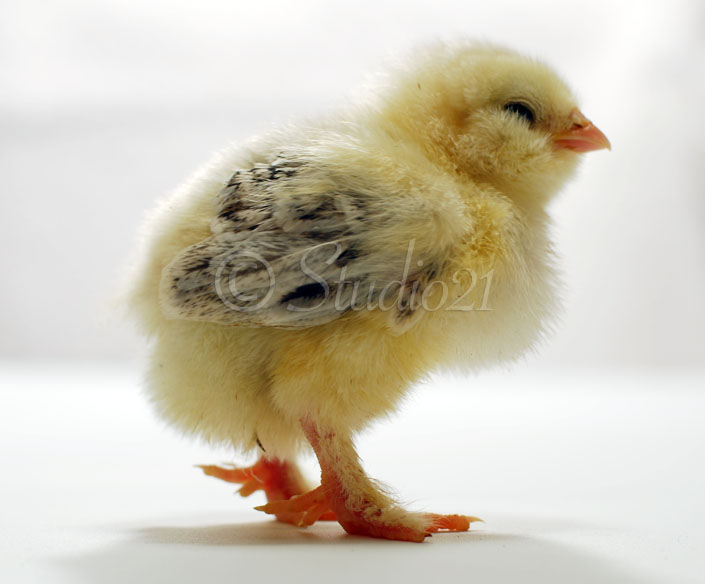
Gladys (Salmon Faverolle) on left
Beulah, Partridge Cochin on right
I loved Napoleon but had to sell him when he started crowing

Gladys

Napoleon and Gladys
 |  |  |

Napoleon giving the smack-down to my Leghorn cockerels.


(Wish I hadn't cut the head off in this one!)
 |  |
 |  |

Gladys - 1 1/2 wks

Ida Mae 1 1/2 wks

Gladys and Ida Mae

Here is my Salmon Favorelle chick. I have two of these.
Faverolles Fanciers of America
| Faverolles Fanciers of America
Our Standard The overall shape of the bird should be trapezoidal and the feathering rather fluffy. Wide backs and chests are a necessity. Deep in keel with carriage well centered. Revered in the females are feathers that go backwards in the side of the hackle. The beard and muff should be extreme with little to no wattle at all. Fullness of beard is desired over length, with the beard covering the ear lobe. Face, comb, and earlobe should be red. Eye color red bay. The comb is single, and medium in size with five points and no serrations. This breed has five separate toes and skin and leg color are white. Light feathering should appear on the outside of the leg and outer toes. There is a slight break between the feathers of the body and leg. The leg feathering of the Cochin is not what is desired. Type should always be given preference over color, not only in the show pen, but in the breeding pen as well. When considering weight on the Faverolles it is of the utmost importance to remember that the bird was originally known for its table qualities. Density and mass of the bird are what should be looked at. They are not tall birds, like Rocks, but at the same time they are not short and close to the ground. The breadth of the chest and legs is where the mass comes in. Ideal weights are suggested in the American Poultry Association Standard for our American birds. Cocks: 8 lbs. Hens: 6 1/2 lbs. Cockerels: 7 lbs. Pullets: 5 1/2 lbs. The Standards of other countries call for more or less within a pound. But, it is stated in several writings from the early 1900's that bigger usually means a cost in the quality and type of the bird. In the Salmon variety, the hen is a completely different color from the male. This is the only breed that has this color. The male is black in beard, breast, and underneath with straw colored hackle, back, and saddle. Rich golden on the bow of the wing with a white triangle at the tip. Tail primaries beetle green and leg feather black. Underfluff should be slate gray. The hen has a color range from pink salmon to copper salmon on the hackle, back, and wing. Creamy white from the beard to the vent with no splashing of top color and an overall slate gray underfluff. Other varieties of the Faverolles are limited to white in the United States. All of the aforementioned type descriptions would apply to this breed regardless of variety. In Europe other colors do exist and Blacks and Buff are being worked on in this country. They come in Large Fowl and Bantam form. If you have ever wanted a beautiful bird, with wonderful personality and challenge in the breeding pen, try some. They are well worth the effort and time. |